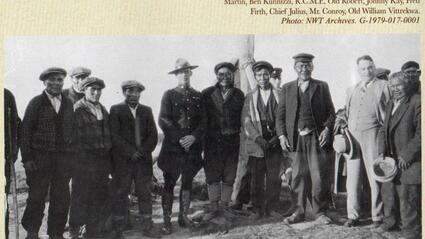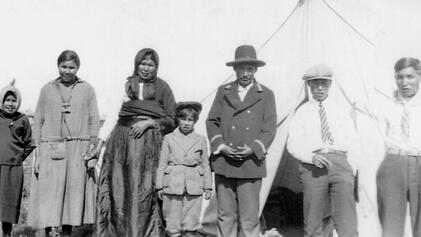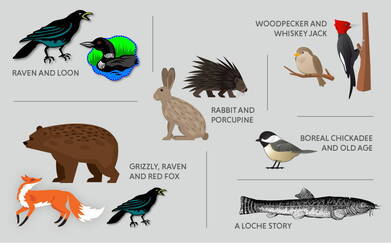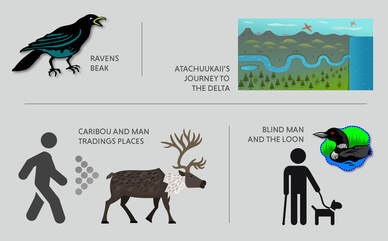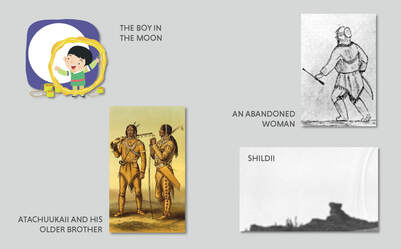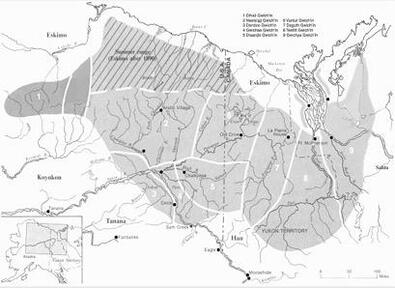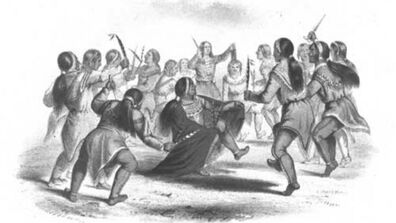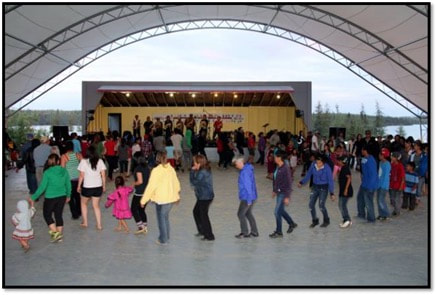GWICH'IN HISTORY
|
We are one of the most northerly Indigenous peoples on the North American continent, living at the northwestern limits of the boreal forest. Only the Inuit live further north. We are part of a larger family of Indigenous people known as Athapaskans, which include peoples such as the Slavey, Dogrib, Han and Tutchone but our language and way of life is distinct.
At the time of contact with Euro-Canadians, we lived in nine different bands with lands stretching from the interior of Alaska through the Yukon and into the Mackenzie Valley. In the Northwest Territories, we now live primarily in the communities of Fort McPherson, Tsiigehtchic, Aklavik and Inuvik and we number about 3500 people. We still maintain close cultural and family ties with our Gwich'in relatives in the Yukon and Alaska, and together we total over 6000 people in 15 communities. Traditionally, our lands extended from the mountain headwaters of the Peel and Arctic Red Rivers in the south, to the Mackenzie Delta in the north, from the Anderson River in the east, to the Richardson Mountains in the west. Many families still maintain summer and winter camps outside our communities. Hunting, fishing and trapping remain important both culturally and economically, with caribou, moose and whitefish being staples of our diet. |
Early History
|
ANIMAL INTERACTION
The Gwich'in have been around since time immemorial and their legends depict this. The first set of legends begin during the time that only animals were interacting and communicating with one another. The legends that reflect this time are: Raven and Loon, Woodpecker and Whiskey Jack, A Loche Story, Grizzly, Raven and Red Fox, Boreal Chickadee and Old Age, Rabbit and Porcupine Stories. Note: List provided by Alestine Andre. GSCI is currently working on a DVD project that will include 16 legends told in Gwich'in with English sub-titles. |
|
ANIMALS AND HUMANS INTERACT AND COMMUNICATE
The second set of legends depict the time animals and humans begin interacting with one another. The legends that reflect this time are: Raven's Beak, Caribou and Humans Trading Places, The Blind Man and the Loon, Atachuukaii's Journey to the Delta. Note: List provided by Alestine Andre. GSCI is currently working on a DVD project that will include 16 legends told in Gwich'in with English sub-titles. |
|
The third set of legends includes only human beings. The legends that reflect this time are: The Boy in the Moon, Shildii, Atachuukaii and his Older Brother, An Abandoned Woman
Note: List provided by Alestine Andre. GSCI is currently working on a DVD project that will include 16 legends told in Gwich'in with English sub-titles. STORIES
The last set are not legends but more recent stories that most Gwich'in are familiar with. The stories that reflect this are: Bushman Steals Woman and Bushman Story. Note: List provided by Alestine Andre. GSCI is currently working on a DVD project that will include 16 legends told in Gwich'in with English sub-titles. |
|
EARLY GWICH'IN GROUPS
There were nine groups of Gwich'in that occupied the areas of Alaska to the Northwest Territories (current names of area). They were the: Dihaii Gwich'in (the far people-Alaska), Neets'aii Gwich'in (Chandalar River People - Arctic Village/Venetie), Dendoo Gwich'in (Birch Creek People), Gwichaa Gwich'in (Yukon Flats People - Ft. Yukon, Circle & Beaver), Draanjik Gwich'in (Black River People - Chalkyitsik), Vuntut Gwich'in (Crow Flats People - Old Crow), Dagudh Gwich'in (Upper Porcupine River People - Ft. McPherson, Old Crow & Dawson), Teetlit Gwich'in (Peel River People - Ft. McPherson), Gwichya Gwich'in (Arctic Red River/MacKenzie River People - Tsiigehtshik) Excerpt taken from: Gwichya Gwich'in Googwandak |
|
CULTURAL EVENTS
The Gwich'in have always gathered to feast, dance & play games. The earliest of these stories were held at the Flats as early as ts'ii deii days (see Gwichya Gwich'in Googwandak). To this day, Gwich'in people still love to gather and the most popular site to gather now is at the Midway Lake Music Festival held in the mountains above Fort McPherson. Painting c. 1845 by Alexander Hunter Murray |

